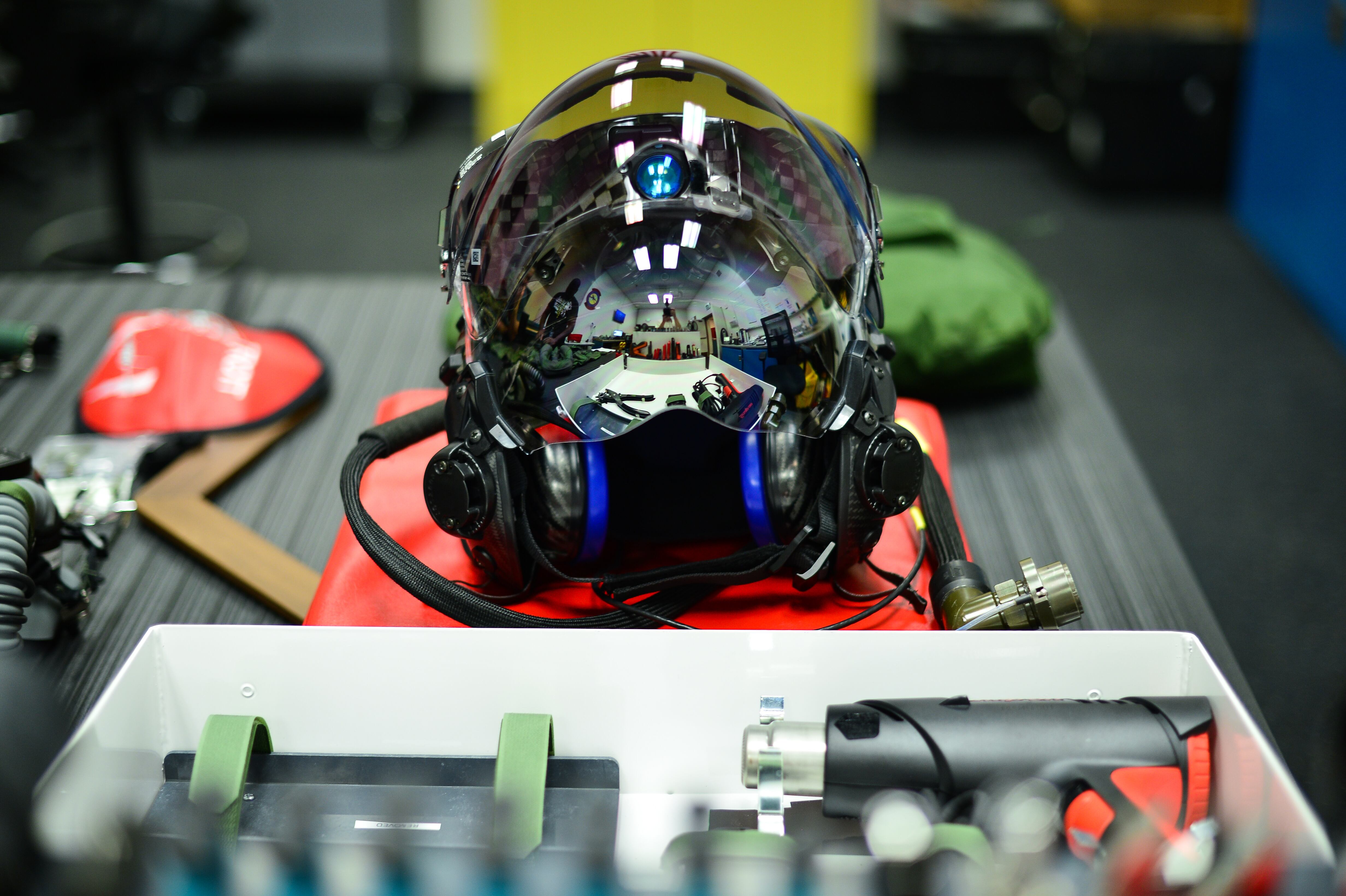WASHINGTON — The U.S. Defense Department is slowly but surely whittling down the number of F-35 technical problems, with the fighter jet program’s most serious issues decreasing from 13 to seven over the past year.
In June 2019, Defense News published an investigation delving into the details of 13 previously unreported category 1 deficiencies — the designation given to major flaws that impact safety or mission effectiveness.
Following the report, five of those 13 category 1 problems have been “closed,” meaning they were eliminated or sufficiently corrected. Five were downgraded to a lower level of deficiency after actions were taken to help mitigate negative effects, and three issues remain open and unsolved, according to the F-35 program executive office.
Four additional CAT 1 problems have also since been added to the list, raising the total CAT 1 deficiencies to seven. The program office declined to provide additional details about those issues for classification reasons, but stated that software updates should allow all of them to be closed by the end of 2020.
“The F-35 Lightning II Joint Program Office is keenly aware of these existing F-35-related category 1 deficiencies and is focused on developing and implementing solutions for these issues as quickly as possible,” the program office said in response to questions from Defense News. “F-35 operator safety is the F-35 JPO’s highest priority.”
RELATED

In a statement to Defense News, F-35 manufacturer Lockheed Martin confirmed the number of open category 1 deficiencies. However, the company declined to provide further information about the path to fix current issues or how earlier issues had been ameliorated.
“We are actively addressing the deficiencies and expect all to be downgraded or closed this year,” the company said.
While the overall reduction in deficiencies is a promising trend, it is also important to track how problems are solved and how quickly fixes are pushed to the rest of the fleet, said Dan Grazier, an analyst with the independent watchdog group Project on Government Oversight.
“I’m not surprised that they are continuing to find issues. This is why we are supposed to be testing weapon systems before we buy a whole bunch of them. I am a little surprised that we are finding CAT 1 deficiencies at this point during operational testing,” Grazier said.
“I think that speaks to the level of complexity with this program that it’s taken us this long to get to this point, and even after all the testing that has been done and the time and money that has gone into this that we’re still finding category 1 issues," he added. "It shows that the program wasn’t born in the right place. It was way too ambitious from the very beginning.”
Aside from four classified problems, there remain three open category 1 deficiencies in need of a fix. There are myriad reasons for that, the program office stated.
“Reasons for delayed issue closure vary according to the complexity of the solution and the availability of test assets needed to verify the solution,” the JPO said. “The U.S. services fund the F-35 program to address a prioritized set of DRs [deficiency reports], while at the same time, develop new capabilities. It is likely that some low-priority DRs will never be resolved because of their minor impact on F-35 fleet operations does not justify the cost of resolution."
The F-35 program office provided some details on the path forward for resolving these technical flaws, but noted that many details regarding those plans remain classified:
Spikes in the F-35 cockpit’s cabin pressure have been known to cause barotrauma, or extreme ear and sinus pain.
This problem was documented when two Air Force pilots, flying older versions of the F-35A conventional-takeoff-and-landing model, experienced ear and sinus pain that they described as “excruciating, causing loss of in-flight situational awareness, with effects lasting for months,” according to documents obtained by Defense News. The physiological event is known by the medical term barotrauma.

The F-35 Joint Program Office believes barotrauma in the jet is caused when sensors on the outer mold line of the aircraft detect “rapidly changing static pressures” that, in turn, drive very quick changes of the cockpit pressure regulator valve.
Lockheed Martin has tested a fix that proved to be successful in a laboratory setting, Lockheed program head Greg Ulmer said last year.
But flight testing of that improvement has not occurred, slowing the pace of a solution. The F-35 program office now says flight testing of a new cockpit pressure regulation system is planned for mid-2020. If all goes well, the deficiency should be completely eliminated in 2021.
On nights with little starlight, the night vision camera sometimes displays green striations that make it difficult for all F-35 variants to see the horizon or to land on ships.
On nights where there is little ambient light, horizontal green lines sometimes appear on the night vision camera feed, obscuring the horizon and making landing on a ship more dangerous.
The problem is different than the notorious “green glow” issue, caused when the F-35 helmet-mounted display’s LED lights produce a greenish luminescence that inhibits a pilot’s ability to land on an aircraft carrier on nights with very little light.
At one point, both Lockheed and the government’s program office believed both problems could be solved by the F-35 Generation III helmet that the U.S. military began fielding last year.

Although the program office no longer considers the “green glow” problem a deficiency, it appears that the new helmet did not completely solve the night vision camera issue. The program office told Defense News that it intends to develop software improvements and test them in flight later this year, but the deficiency will not be considered “closed” until at least 2021.
The sea search mode of the F-35’s radar only illuminates a small slice of the sea’s surface.
Unlike the other problems, which are the result of the contractor not meeting technical specifications or the jet not working as planned, this deficiency is on the books even though the jet’s Northrop Grumman-made AN/APG-81 active electronically scanned array radar fulfills its requirements.
Currently, the radar can only illuminate what is directly in front of it when in sea search mode. That performance is not good enough for the Navy, which wants to be able to search a wider area than is currently possible.
Although this problem can be fixed with software modifications and an upgrade to the radar’s processing power, it will continue to be on the books for some time. According to the program office, “[the] U.S. services agreed to plan for an improved radar mode, which will require the Technology Refresh-1 avionics update, for software release in [calendar year] 2024.”
‘A line in the sand’
Although Defense Department and military leaders have criticized the F-35 program for high operations and sustainment costs, the operational community has rallied around the performance of the jet, praising its advanced computing capability that allows the aircraft to mesh together data from different sensors and provide a more complete picture of enemy threats.
Brig. Gen. David Abba, who leads the Air Force’s F-35 integration office, said in March that he was comfortable with the path forward to correct open deficiencies, downplaying the impact of those issues on daily operations.
“Is it important to hold folks’ feet to the fire and make sure that we’re delivering on the capabilities that we need? Yes,” he said. But, he added, it’s also difficult to balance the need to meet a stated technical requirement against the reality of a fielded technology that may already be performing well in daily operations.
“That’s the crux of the acquisition and the delivery problem that we have,” Abba said. “When we say ‘I need this to work exactly like this,’ I’m drawing a line in the sand. If I’m a half degree on one side of that line versus the other, is it really that different? That’s where the art comes in.”
“We’ve got to kind of get over ourselves a little bit and acknowledge that we never field perfect weapon systems,” he continued. “I don’t want to diminish the fact that it’s critical that we get after open DRs, but every weapon system in the United States Air Force — and frankly around the planet — has open deficiencies. What matters is the severity of those deficiencies and ensuring that we have a robust process between government and industry to triage those and deal with them appropriately.”
Aaron Mehta and David B. Larter contributed to this report.
Valerie Insinna is Defense News' air warfare reporter. She previously worked the Navy/congressional beats for Defense Daily, which followed almost three years as a staff writer for National Defense Magazine. Prior to that, she worked as an editorial assistant for the Tokyo Shimbun’s Washington bureau.




